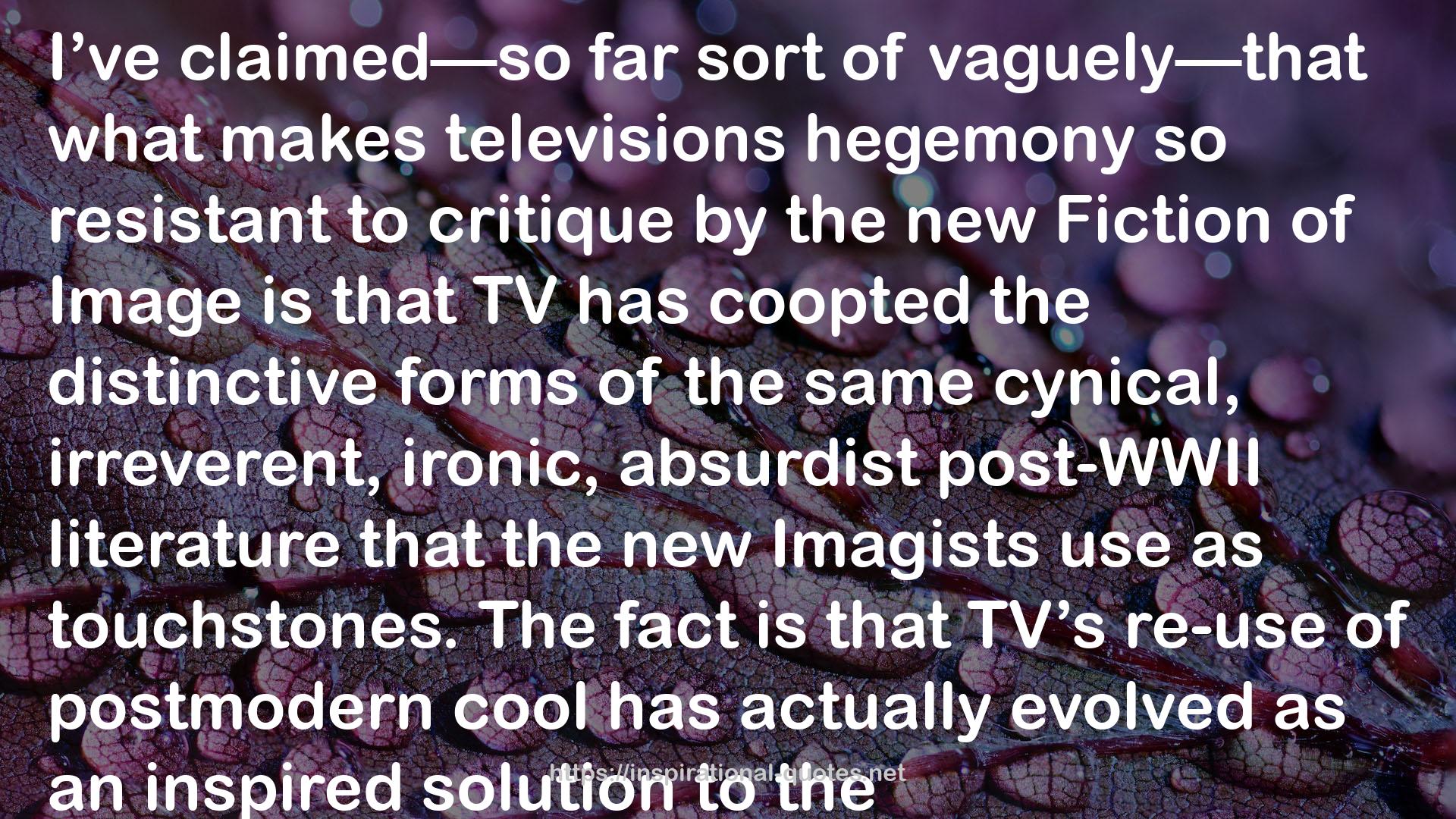" I’ve claimed—so far sort of vaguely—that what makes televisions hegemony so resistant to critique by the new Fiction of Image is that TV has coopted the distinctive forms of the same cynical, irreverent, ironic, absurdist post-WWII literature that the new Imagists use as touchstones. The fact is that TV’s re-use of postmodern cool has actually evolved as an inspired solution to the keep-Joe-at-once-alienated-from-and-part-of-the-million-eyed-crowd problem. The solution entailed a gradual shift from oversincerity to a kind of bad-boy irreverence in the Big Face that TV shows us. This in turn reflected a wider shift in U.S. perceptions of how art was supposed to work, a transition from art’s being a creative instantiation of real values to art’s being a creative rejection of bogus values. And this wider shift, in its turn, paralleled both the development of the postmodern aesthetic and some deep and serious changes in how Americans chose to view concepts like authority, sincerity, and passion in terms of our willingness to be pleased. Not only are sincerity and passion now “out,” TV-wise, but the very idea of pleasure has been undercut. As Mark C. Miller puts it, contemporary television “no longer solicits our rapt absorption or hearty agreement, but—like the ads that subsidize it—actually flatters us for the very boredom and distrust it inspires in us.” 24 "
― David Foster Wallace , A Supposedly Fun Thing I'll Never Do Again: Essays and Arguments
